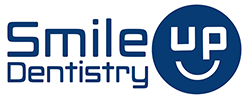Inhale Wisdom: Unveiling the Power of Nasal Breathing Over Mouth Breathing
Breathing, an act so primal and essential, is often taken for granted. Yet, the way we breathe can have a profound impact on our overall health and well-being. In the eternal debate of mouth breathing vs. nasal breathing, the latter emerges as a clear victor, offering a plethora of benefits that extend beyond the simple exchange of oxygen. In this article, we delve into the intricacies of nasal breathing, exploring why it’s the preferred route for optimal health, and why mouth breathing should be approached with caution.
The Marvels of Nasal Breathing
Nasal breathing, often referred to as the “right” way to breathe, is a natural and efficient mechanism that our bodies are designed for. The nose acts as a sophisticated air filter and humidifier, preparing the air before it reaches the delicate lung tissues. The benefits of nasal breathing go far beyond mere filtration:
- Air Quality Enhancement: The intricate structures inside the nose help filter out impurities, allergens, and particles present in the air, preventing them from entering the respiratory system.
- Moisture Regulation: Nasal passages humidify the air, ensuring that the delicate lung tissues receive adequately moistened air. This helps prevent irritation and inflammation.
- Nitric Oxide Boost: Nitric oxide, a beneficial molecule produced in the nasal passages, plays a vital role in expanding blood vessels, improving oxygen uptake, and enhancing overall lung function.
- Respiratory Muscle Engagement: Nasal breathing engages the diaphragm and the lower rib cage muscles, promoting efficient oxygen exchange and enhancing lung capacity.
The Pitfalls of Mouth Breathing
Mouth breathing, on the other hand, can lead to a host of undesirable consequences:
- Dry Air Impact: Breathing through the mouth exposes the respiratory system to dry and unfiltered air, potentially causing irritation, inflammation, and susceptibility to infections.
- Orthodontic Issues: Prolonged mouth breathing in childhood can lead to facial and dental deformities, as well as an increased risk of crooked teeth and a narrow palate.
- Sleep Disruption: Chronic mouth breathing is associated with sleep disorders such as sleep apnea, snoring, and disrupted sleep patterns.
- Impaired Oxygen Exchange: Mouth breathing tends to be shallower, leading to decreased oxygen uptake and suboptimal exchange in the lungs.
Embracing Nasal Breathing
Shifting from mouth breathing to nasal breathing requires conscious effort and practice. Here are a few strategies to embrace the marvels of nasal breathing:
- Mindful Awareness: Begin by becoming aware of your breathing patterns throughout the day. If you catch yourself mouth breathing, gently redirect your breath through your nose.
- Clear Airways: Keep your nasal passages clear by using saline nasal sprays or a neti pot to flush out any congestion.
- Breathing Exercises: Engage in deep breathing exercises that encourage diaphragmatic engagement and promote the habit of nasal breathing.
- Tape Technique: If you struggle with nighttime mouth breathing, consider using surgical tape to gently close your lips during sleep.
Conclusion
In the eternal tussle of mouth breathing vs. nasal breathing, it’s clear that the nose triumphs as the gateway to better health. Beyond the simple act of oxygen exchange, nasal breathing provides a myriad of benefits that support respiratory health, oxygenation, and overall well-being. By making a conscious effort to embrace nasal breathing and curbing mouth breathing habits, we pave the way for a healthier, more vibrant life. After all, the wisdom of optimal breathing is as close as each inhale and exhale.
Dr. Sonya Reddy received her education at the prestigious NYU College Of Dentistry, where she also received special training in Cosmetic Dentistry. Dr. Reddy is a member of the American Cosmetic Dentists, the Academy of General Dentistry, the American Dental Association, and a SMART certified and accredited member of the International Academy of Oral Medicine & Toxicology.

